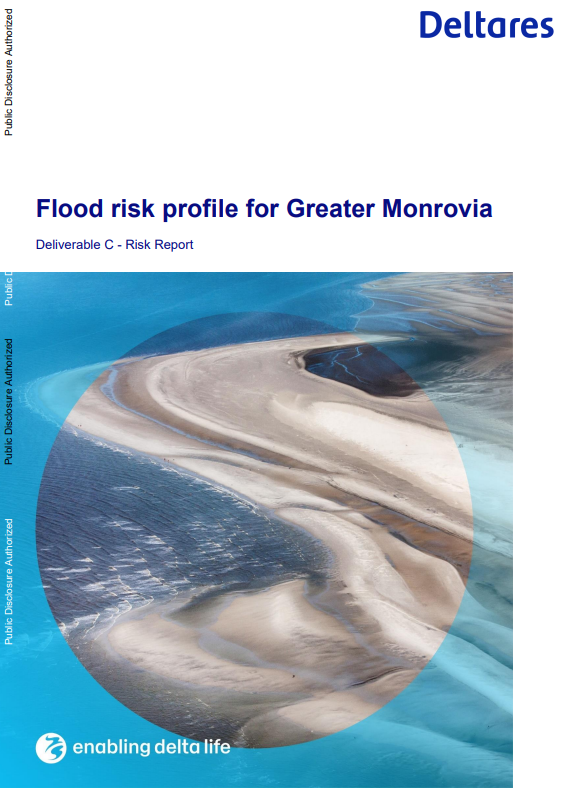The objective of this assignment is to support the improved knowledge and understanding of flood risk in Greater Monrovia and contribute to the World Bank’s integrated urban development and resilience strategy in the region. This risk report describes the methodology and results of the hazard and risk modelling carried out by Deltares and iLab Liberia in collaboration with the stakeholders and the World Bank. The risk evaluation was carried out using the Delft- flood impact assessment tool (FIAT), using the flood inundation maps, exposed assets map and the damage functions. Exposed asset and impact information were collected in the community whilst the damage functions were created by adjusting benchmarked functions against estimated costs from the Joint Research Centre’s database. In the case of high river discharge timing relative to coastal and pluvial peak, the differences in flood depth seem to relate to cases where infiltration seemed to play a crucial role. The reason behind this is that, while coastal and pluvial peak values are temporary, the discharge forcing prescribed is constant. Although extensive mapping efforts have been made on the city, there is no comprehensive geodatabase of building type, construction materials, household income, etc. for the entire city. Chapter one summarizes the assignment in detail, chapter two describes the data used in the modelling, chapter three gives the modelling methodology for coastal, riverine and pluvial flood mechanisms, and the estimation of storm event sets, chapter four presents the hazard and risk results. Chapter five summarizes the conclusions and recommendations whilst chapter six lists the references used.
Flood Risk Profile for Greater Monrovia: Risk Report
March 1, 2021 Read this publication

